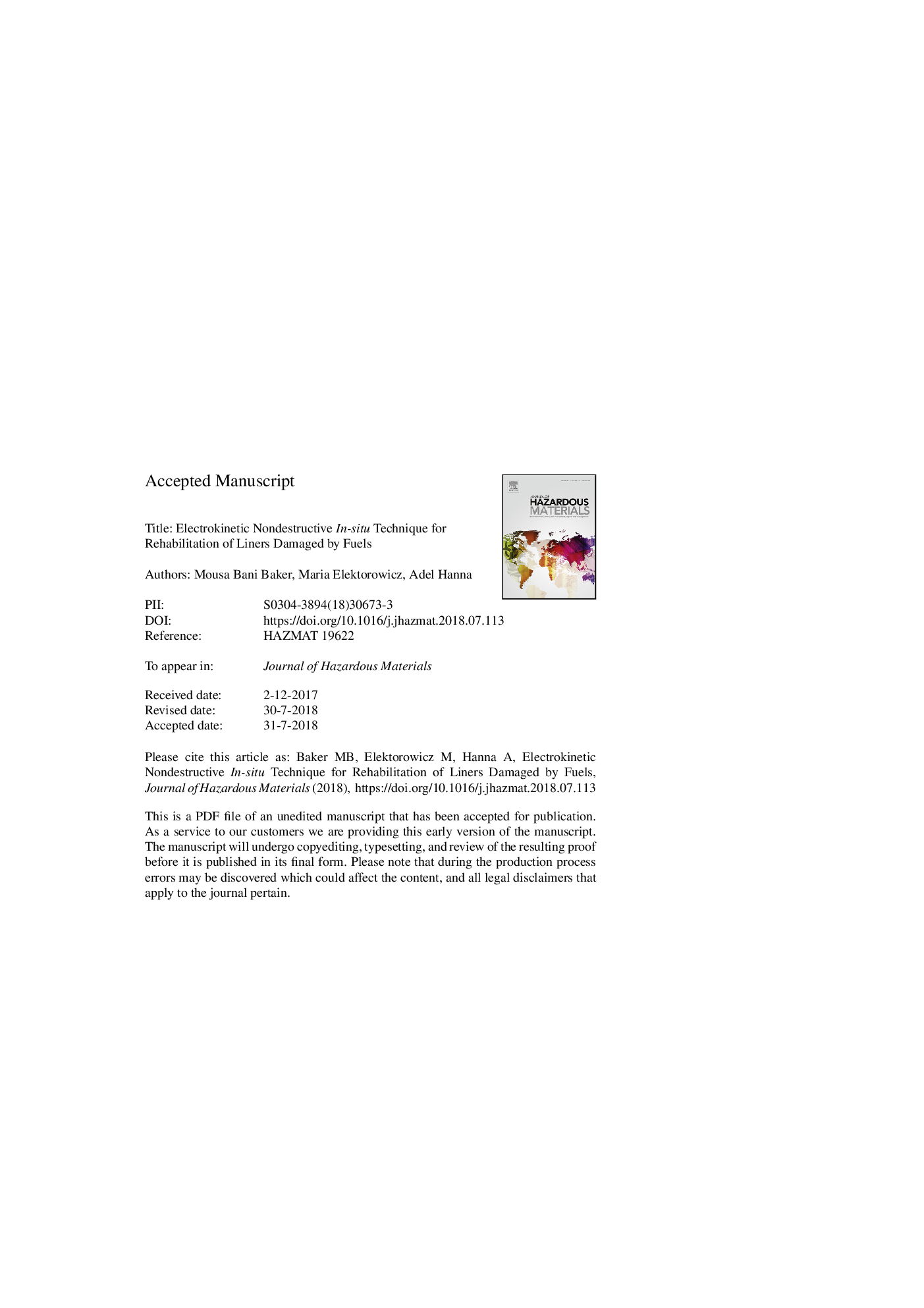| Article ID | Journal | Published Year | Pages | File Type |
|---|---|---|---|---|
| 6968093 | Journal of Hazardous Materials | 2018 | 14 Pages |
Abstract
Underground Storage Tanks (UGST) are often used to store hydrocarbon products and fuels. Liners under such tanks are normally formed to prevent leaching or/and overflow to groundwater. Similar protection is required in case of waste fuels, which are discharged to disposal sites (e.g. ponds, landfill). Thus, a successful protection depends on the liner formation, which might undergo destruction due to leaching. This paper presents the results of experimental investigation to examine the serviceability of liner against leachate infiltration. In order to simulate the behavior of sand-bentonite liners affected by alternative fuels (ethanol and biofuel), the leaching column tests were applied and the hydraulic conductivity was used as an indicator of the effectiveness of the rehabilitation process. Furthermore, the silicate grout solution and pretreatment with surfactant under the effect of electrokinetic phenomena to pre-wash the biofuel residuals in liner were investigated. Silica grout formulations were developed and adequate curing periods were established for electro-silicatization process. Results showed that hydraulic conductivity was reduced fourfold for the case of using three-step electro-rehabilitation for alternative fuels under pressure of 40âkPa, and reduced threefold in the case of 100âkPa pressure on liner.
Related Topics
Physical Sciences and Engineering
Chemical Engineering
Chemical Health and Safety
Authors
Mousa Bani Baker, Maria Elektorowicz, Adel Hanna,
